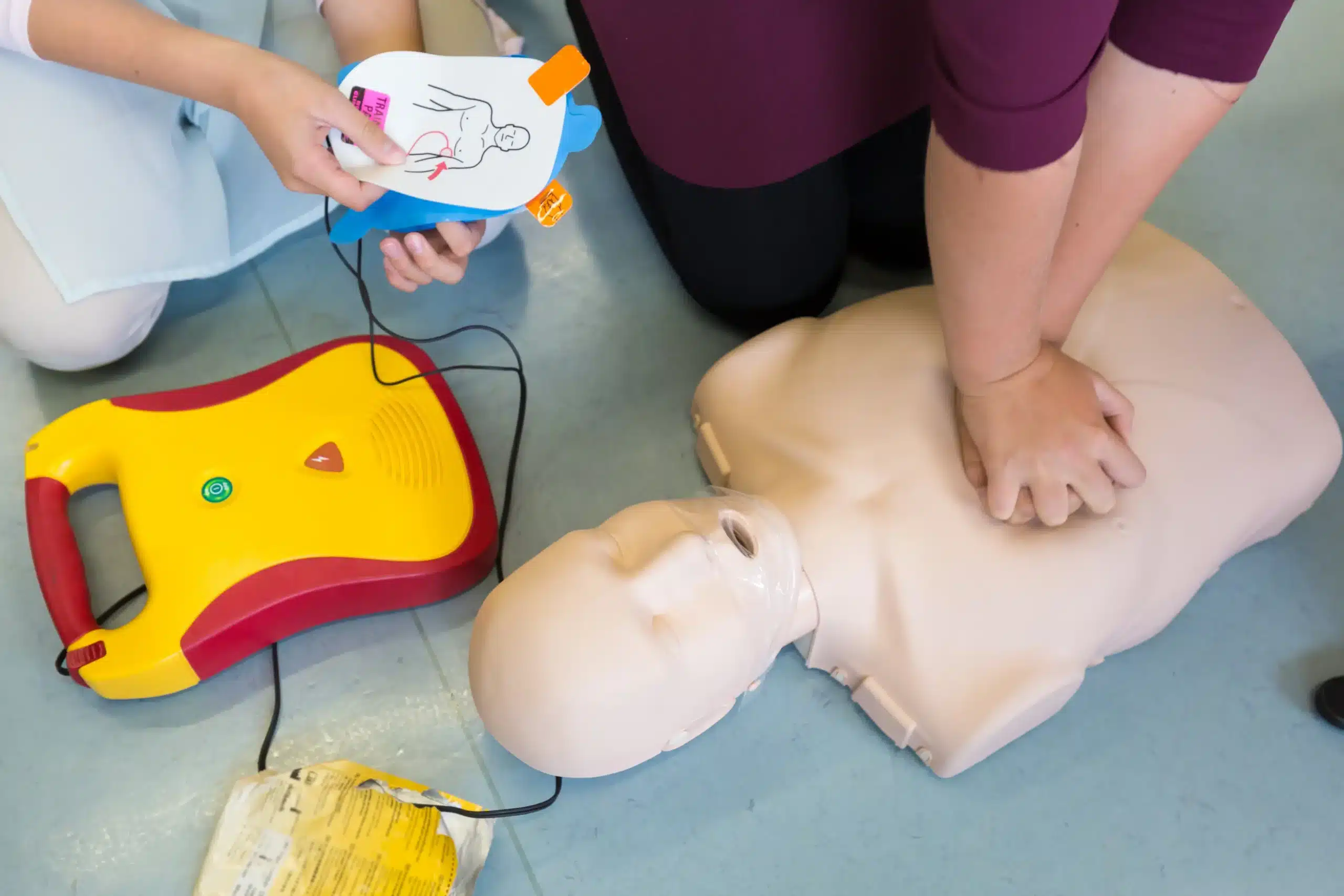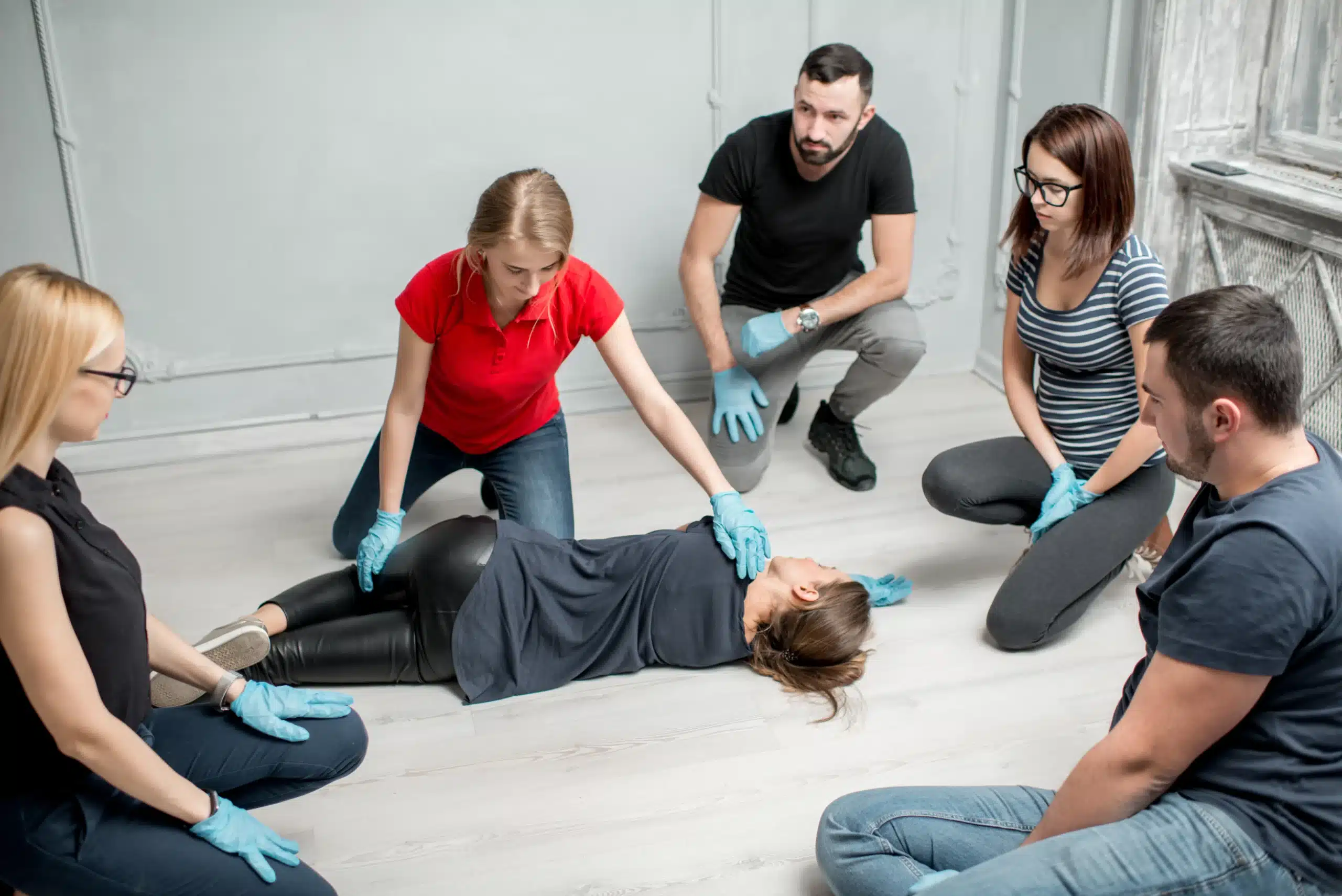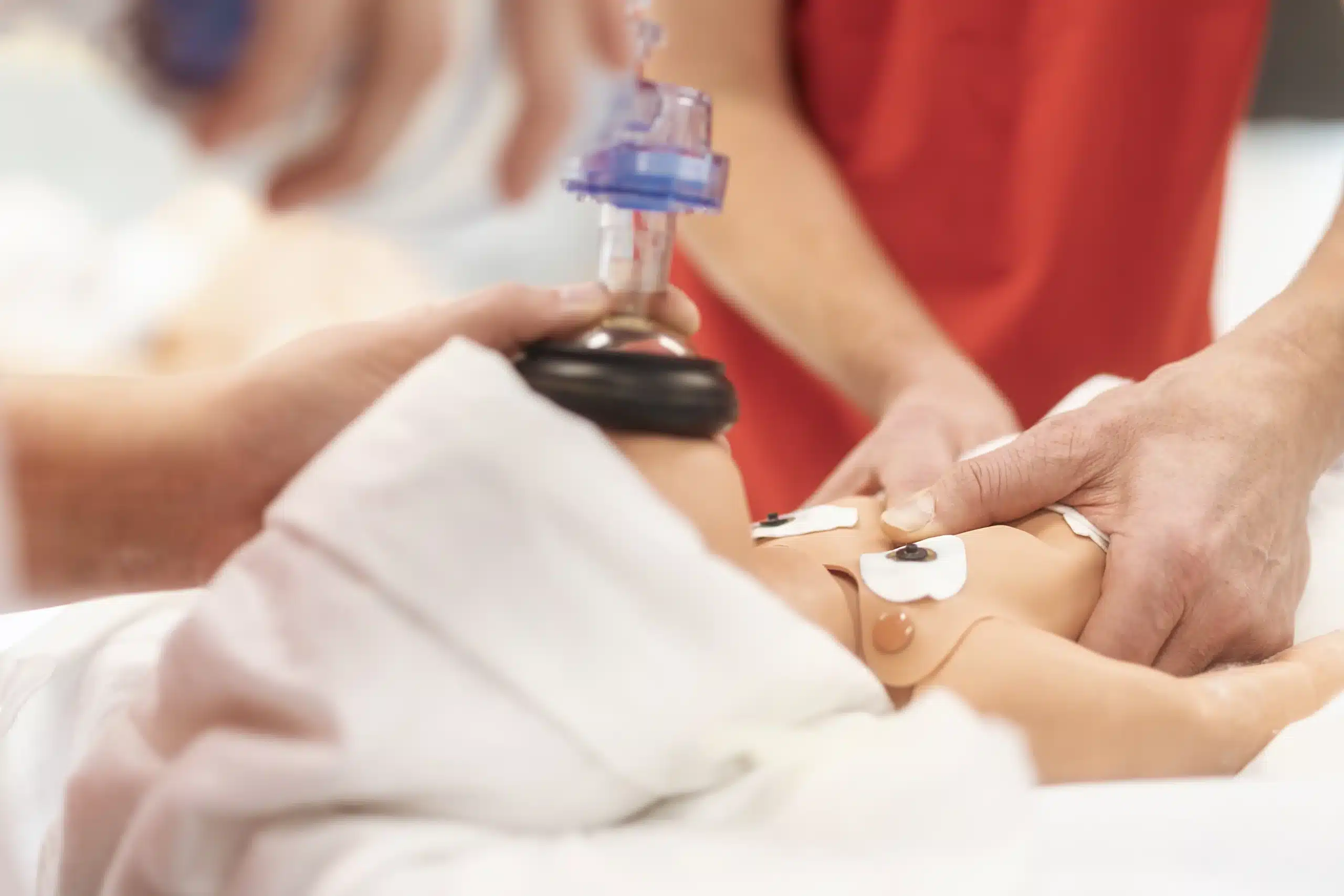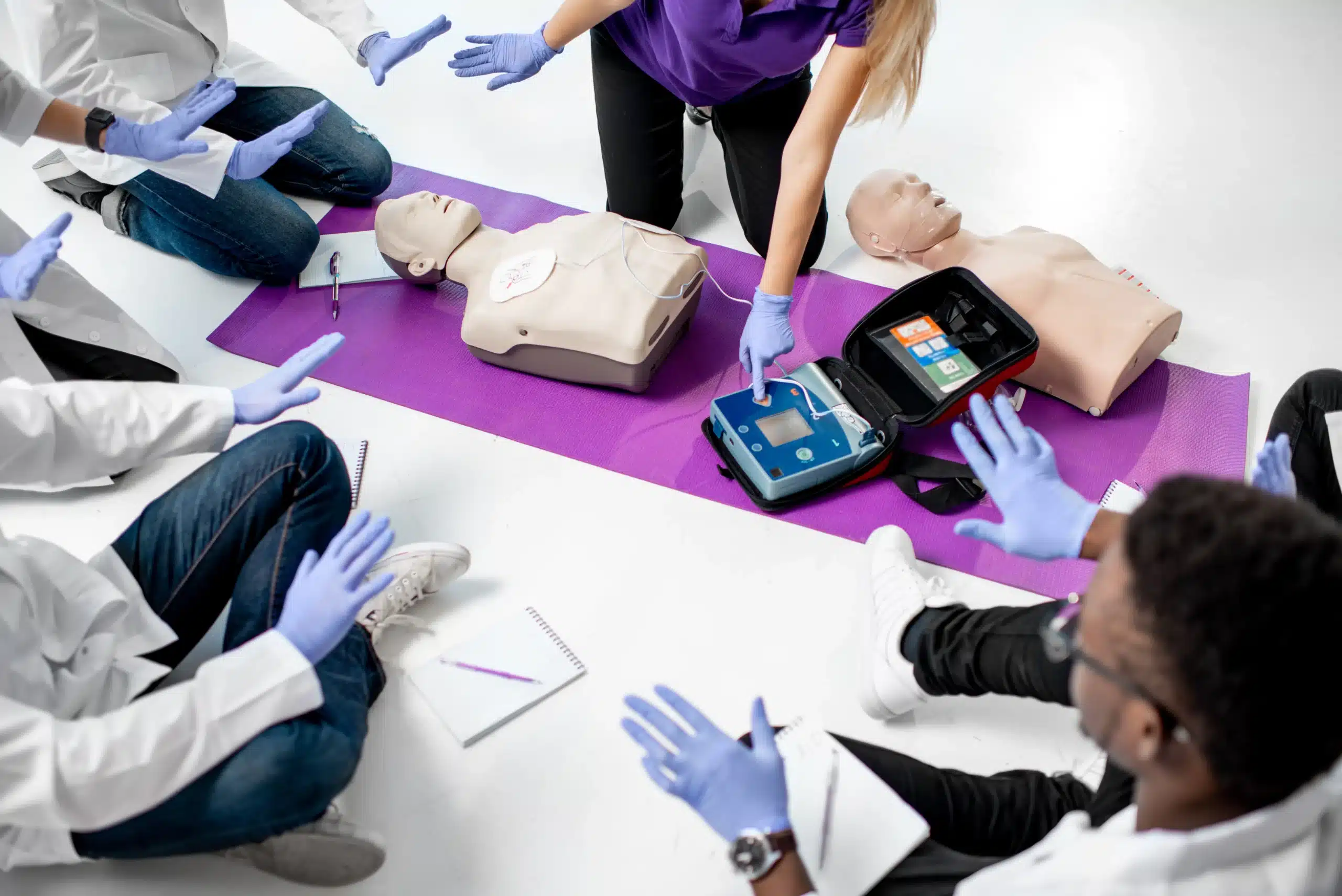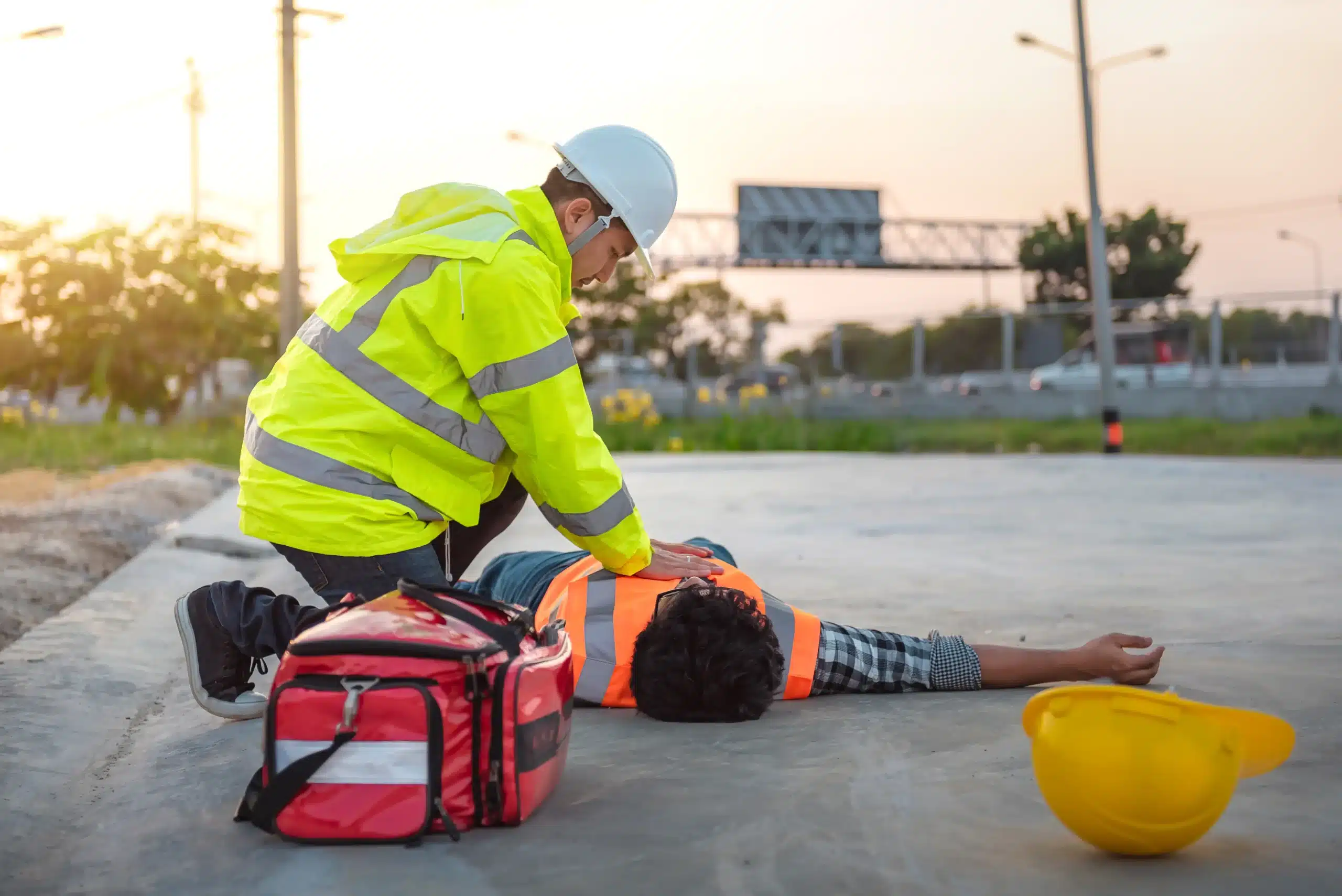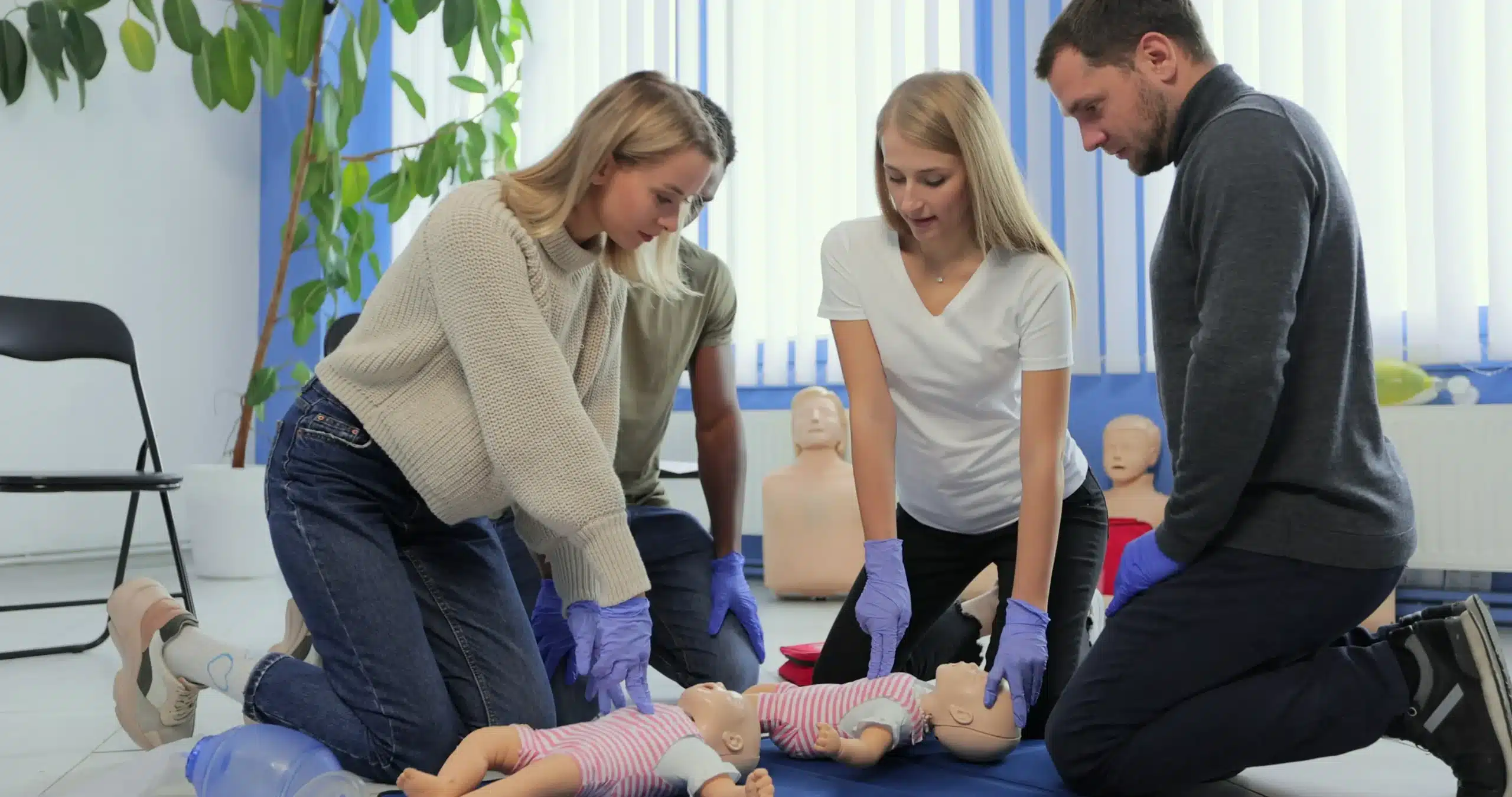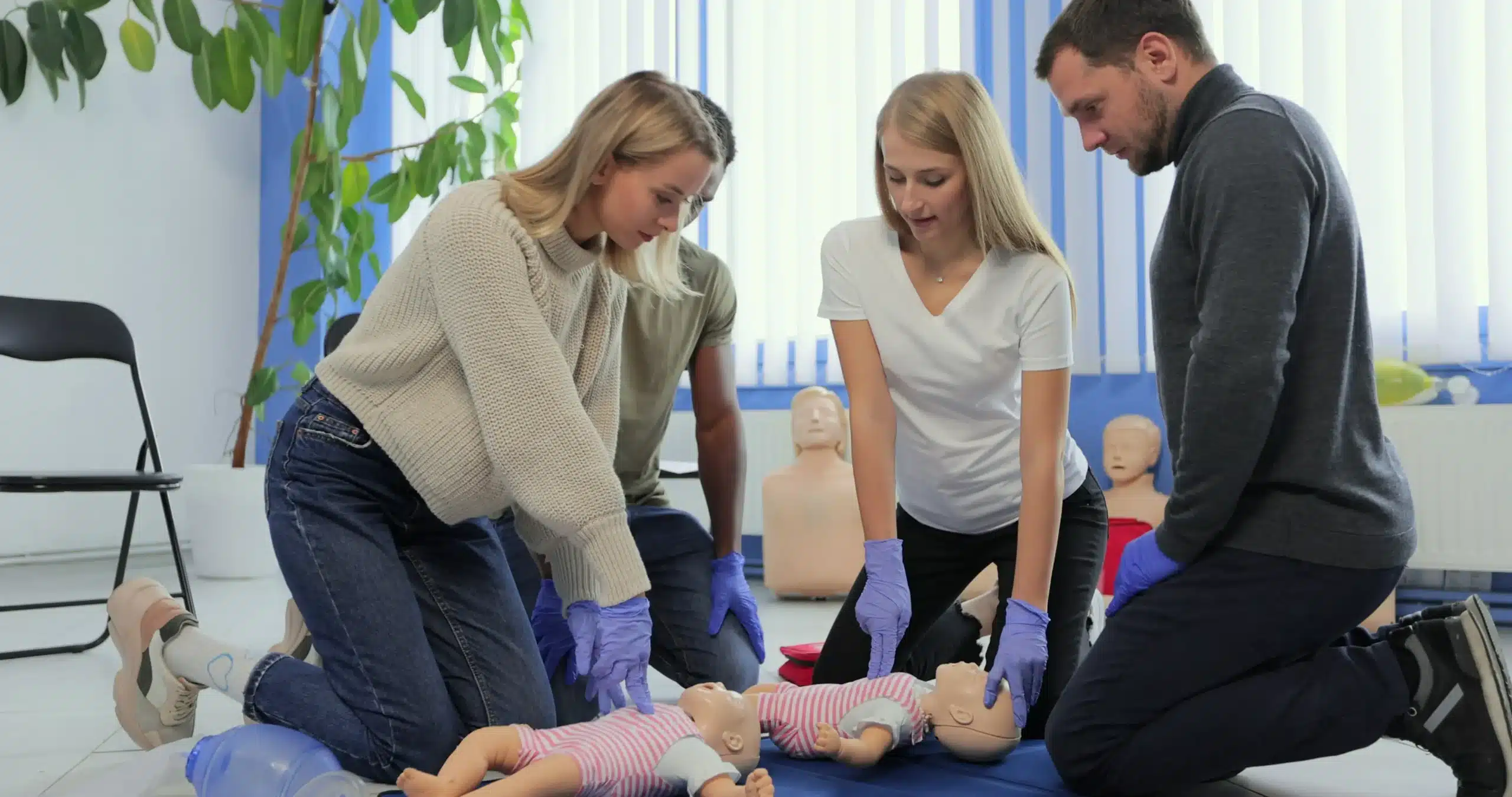Life with kids is full of surprises, and not all of them are pleasant. From playground tumbles to unexpected illnesses, knowing how to provide immediate care can bring peace of mind to any parent, caregiver, or professional working with children. That’s where pediatric first aid and CPR training comes in. This comprehensive training equips you with the skills to handle a wide range of situations, from treating minor cuts and scrapes to responding to life-threatening emergencies like choking or cardiac arrest. It’s about empowering yourself to act quickly, confidently, and effectively when a child’s safety is at stake. Join us as we explore the world of pediatric first aid and CPR, covering everything from the essential skills you’ll learn to finding the right certification course for your needs.
Key Takeaways
- Pediatric first aid and CPR equip you to handle emergencies involving children. These skills empower you to respond effectively to various situations, from minor injuries to life-threatening conditions.
- Find a reputable training provider that offers hands-on practice and feedback. Look for courses covering CPR, choking response, injury management, and AED use for children and infants.
- Regularly review and practice your skills to maintain proficiency. Sharing your knowledge with others creates a safer environment for the children in your community.
What is Pediatric First Aid and CPR?
Pediatric First Aid and CPR training gives you the skills to respond to emergencies involving children and infants. It covers a range of situations, from minor injuries like cuts and scrapes to life-threatening conditions like choking, cardiac arrest, and drowning. Knowing how to react quickly and confidently can make all the difference.
How Pediatric First Aid and CPR Differ From Adult First Aid and CPR
While the basic principles of CPR remain consistent, there are crucial differences between performing CPR on adults and children. The depth and rate of chest compressions, for example, vary depending on the child’s age and size. Pediatric First Aid also addresses common childhood illnesses and injuries not typically encountered with adults. Additionally, while valuable, basic CPR training doesn’t replace the specialized knowledge gained through PALS certification for pediatric emergencies.
Common Misconceptions and Facts
Many hesitate to learn CPR due to common misconceptions. Some worry about performing it incorrectly or causing further injury, while others believe only medical professionals need to know CPR. Dispelling these myths is the first step towards empowering yourself to save a life. Anyone can learn and perform CPR effectively. Another misconception is that CPR isn’t necessary for drowning victims. In reality, immediate CPR is often crucial for drowning victims, significantly increasing their chances of survival. Don’t let these misunderstandings prevent you from gaining this essential skill.
Why Learn Pediatric First Aid and CPR?
Knowing what to do in a medical emergency can make all the difference, especially when it comes to children. Pediatric first aid and CPR training equips you with the skills to respond effectively to a range of situations, from minor injuries to life-threatening emergencies. It empowers you to provide immediate care, potentially minimizing harm and improving outcomes.
Benefits for Parents and Caregivers
As a parent or caregiver, you’re responsible for your child’s safety and well-being. While we all hope for the best, accidents and illnesses happen. A child suddenly choking on a grape or experiencing an allergic reaction can be terrifying. Having pediatric first aid and CPR training gives you the confidence to handle these situations calmly and effectively. Knowing how to assess the situation, perform CPR, or administer basic first aid can stabilize a child until professional medical help arrives. This knowledge brings peace of mind, knowing you can act quickly in a crisis. It’s an investment in your family’s safety and well-being, providing you with essential skills to protect the little ones you love. Completing first aid/CPR/AED training that includes information on infants and children helps you learn and become comfortable with the basics of emergency response.
Importance for Professionals Working with Children
For professionals entrusted with children’s care–teachers, childcare providers, coaches, camp counselors–pediatric first aid and CPR training is often a job requirement and a moral imperative. These certifications demonstrate a commitment to safety and preparedness. They equip professionals to respond to emergencies promptly and appropriately, creating a safer environment for the children in their care. The National Safety Council Pediatric Program meets the first aid and CPR requirements for all 50 states and follows the latest CPR and ECC guidelines. Pediatric First Aid courses are designed for those who care for children. A Heartsaver Pediatric First Aid CPR AED course trains participants how to respond to and manage illnesses and injuries in a child or infant in the first few minutes until professional help arrives. Having trained professionals on hand can significantly impact the outcome of an emergency, ensuring children receive the immediate care they need.
What Will You Learn in a Pediatric First Aid and CPR Course?
A pediatric first aid and CPR course gives you the skills to handle emergencies involving infants and children. These courses cover a lot, from CPR and choking relief to injuries and using an AED. Here’s a closer look:
CPR Techniques for Children and Infants
CPR for children and infants is different from adult CPR. You’ll learn the correct hand positions, how deep to press, and how many rescue breaths to give, all adapted for their smaller bodies. This training helps you provide effective help while minimizing the risk of injury.
Choking Response and Prevention
Choking is a real danger for young children. This part of the course teaches you life-saving techniques like back blows and the Heimlich maneuver, specifically designed for infants and children. You’ll also learn how to prevent choking.
Wound Care and Injury Management
From small cuts to bigger injuries, you’ll learn practical first aid skills. The course covers cleaning and bandaging wounds, stopping bleeding, and figuring out how serious an injury is. You’ll also learn to spot signs of more serious problems and when to get help.
Using AEDs on Children
AEDs can save lives in cardiac emergencies. This section shows you how to use an AED on a child safely and correctly, including the right settings and pad placement.
Where Can You Get Certified in Pediatric First Aid and CPR?
Knowing where to find a credible pediatric first aid and CPR certification is essential. Several respected organizations offer these important courses, both online and in person. Here are a few options:
Safety Training Seminars
Safety Training Seminars offers a range of American Heart Association certifications, including BLS, ACLS, PALS, and NRP, plus CPR and first aid training. They focus on excellent customer service, low prices, and offer the fast RQI certification program. Serving over 60 cities, including Oakland, Berkeley, and Alameda, California, Safety Training Seminars also has discounts for group classes.
American Red Cross
The American Red Cross provides health and safety training, including an Adult and Pediatric First Aid/CPR/AED course. This course covers how to respond to breathing and cardiac emergencies for both adults and children. This combined certification lasts two years. You can find a class and register through their website.
American Heart Association
The American Heart Association offers the Heartsaver Pediatric First Aid CPR AED course, which teaches how to handle illnesses and injuries in children and infants before professional help arrives. This certification is also valid for two years. Locate a Heartsaver course near you on their website.
International CPR Institute
The International CPR Institute offers a Pediatric First Aid course covering CPR/AED and first aid techniques for infants through adolescents. This certification is designed for people who work with children. Learn more about their pediatric first aid certification program on their website.
National Safety Council
The National Safety Council’s Pediatric Program meets first aid and CPR requirements for all 50 states and follows the latest CPR and ECC guidelines. Their program teaches how to provide basic life support and respond in medical emergencies. Explore their pediatric first aid, CPR, and AED training on their website.
Choosing the Right Course: Online vs. In-Person, Duration, and More
Deciding on the right pediatric first aid and CPR course involves several factors. Beyond the basic curriculum, you’ll want to consider the learning format, how long the certification is valid, and opportunities for hands-on practice. Let’s break down these elements to help you make an informed choice.
Online vs. In-Person Training
Both online and in-person courses offer distinct advantages. Online learning provides flexibility, allowing you to learn at your own pace and on your own schedule. This format often suits busy parents, caregivers, or professionals juggling multiple commitments. The American Heart Association offers resources tailored to online learners, such as the Heartsaver Pediatric First Aid CPR AED Online Part 1 Course, designed for childcare providers and anyone responsible for children’s safety. However, if you prefer a more interactive experience or your workplace requires group training, an in-person course might be a better fit. In-person training allows for real-time feedback from instructors and the chance to practice skills with other participants.
Course Duration and Certification Validity
Course duration varies depending on the provider and how much material is covered. Generally, pediatric first aid and CPR courses range from a few hours to a full day. Certification validity is also a crucial factor to consider. Most Heartsaver Pediatric First Aid CPR AED certifications, for example, are valid for two years. Knowing the certification period helps you stay current with the latest guidelines and maintain your skills. A Pediatric First Aid course typically covers CPR/AED techniques and first aid for infants through adolescents, ensuring comprehensive training for various age groups.
Hands-On Practice and Real-Time Feedback
Hands-on practice is essential for effective first aid and CPR training. Research30296-X/fulltext) shows that real-time feedback during CPR training significantly improves performance, especially for healthcare providers. Modern defibrillators often incorporate real-time feedback mechanisms, which are crucial in pediatric cardiac arrest scenarios. When choosing a course, look for programs that emphasize hands-on practice with mannequins and equipment, along with personalized feedback from certified instructors. This approach helps you develop the muscle memory and confidence to respond effectively in real-life emergencies.
How Much Does Pediatric First Aid and CPR Certification Cost?
Knowing the cost of Pediatric First Aid and CPR certification is a practical first step. While prices vary, understanding the average range and available discounts can help you budget effectively. This section breaks down typical costs and highlights the long-term value this training provides.
Average Price Range and Group Discounts
Pediatric First Aid courses, including CPR/AED training for infants and children, generally fall between $25 and $75. Keep in mind that this training covers pediatric victims from infancy through adolescence. If you need adult first aid and CPR/AED certification, you’ll want to take a separate course covering adult care. Many providers, including CPR Classes Oakland, offer group discounts for businesses, organizations, or even groups of friends and family. This can significantly lower the per-person cost, making it a more affordable option. Be sure to ask your chosen provider about group rates and minimum participant requirements.
Long-Term Benefits of Certification
While there’s a definite upfront cost for Pediatric First Aid and CPR training, consider the invaluable long-term benefits. This knowledge equips you with the skills to respond confidently in emergencies involving children, potentially saving a life. Think of it as an investment in your family’s safety, especially if you’re a parent, grandparent, or caregiver. For professionals working with children, this training provides essential skills for managing common pediatric emergencies and creating safer environments. Plus, certification demonstrates your commitment to child safety, which can enhance your professional credibility. Although certification typically lasts two years (with some exceptions like Connecticut, which may require additional materials), the skills and confidence you gain will last a lifetime.
How to Choose a Pediatric First Aid and CPR Course
Picking the right pediatric first aid and CPR course is a big decision. It’s about equipping yourself with the skills to potentially save a child’s life, so you want training that’s thorough, up-to-date, and effective. Here’s what to look for:
Key Factors to Consider
First, make sure the course aligns with established guidelines. The American Heart Association’s Heartsaver Pediatric First Aid CPR AED course, for example, focuses on managing illnesses and injuries in the crucial first few minutes before professional help arrives. This immediate response is often what makes the difference, so prioritize training that emphasizes this. Similarly, the National Safety Council highlights the importance of learning both emergency response and basic life support, ensuring you can assess the situation and provide appropriate care. A comprehensive course should cover both of these critical aspects.
Questions to Ask Training Providers
Don’t hesitate to ask potential training providers specific questions. A good program will be happy to address your concerns. For example, inquire whether the course meets the requirements for childcare providers in your state. This is especially important if you work with children professionally. Also, ask about the balance between theory and practice. Hands-on training with real-time feedback is crucial for building confidence and mastering the techniques. Studies30296-X/fulltext) show that this type of feedback significantly improves CPR performance, so look for a course that incorporates it.
Evaluating Reviews and Testimonials
Finally, check out reviews and testimonials from past participants. These can offer valuable insights into the quality of instruction and the overall learning experience. Look for comments that mention practical, hands-on training, as this is essential for applying your knowledge in real-life emergencies. A reputable course will not only teach you the theory but also give you the opportunity to practice your skills in a safe and supportive environment. Remember, the goal is to feel prepared and empowered to act quickly and effectively if a child ever needs your help. Safety Training Seminars offers comprehensive pediatric first aid and CPR training, including hands-on practice and feedback, designed to meet the needs of both parents and professionals. We also offer group discounts and a low price guarantee. Our courses cover everything from basic life support (BLS) to advanced cardiovascular life support (ACLS) and neonatal resuscitation (NRP).
Essential Skills You’ll Gain
Pediatric first aid and CPR certification goes beyond basic bandage application. These courses equip you with essential, potentially life-saving skills. Let’s explore some of the key takeaways.
Basic Life Support (BLS) for Children
BLS is the foundation of pediatric emergency care. You’ll learn how to assess a child’s condition, perform CPR tailored to their age and size, and provide rescue breaths. This training emphasizes the differences between adult and child CPR, including chest compression depth and ventilation techniques. While general CPR knowledge is helpful, specialized pediatric BLS certification provides the nuanced skills needed to effectively respond to emergencies involving infants and children. For more advanced training, consider a PALS certification to gain specialized knowledge in pediatric advanced life support.
Managing Common Pediatric Emergencies
Beyond CPR, pediatric first aid courses cover a wide range of common childhood emergencies. You’ll gain practical skills to manage allergic reactions, treat minor wounds, control bleeding, and stabilize injuries. You’ll also learn how to recognize the signs and symptoms of serious conditions like shock and heatstroke, and take appropriate action while waiting for professional medical help. This comprehensive training empowers you to respond swiftly and effectively in various situations, ensuring the safety and well-being of children under your care. Consider taking a pediatric first aid course to learn more about managing these emergencies.
Creating and Implementing Emergency Action Plans
A crucial aspect of pediatric first aid and CPR training involves developing and implementing emergency action plans. You’ll learn how to anticipate potential hazards, create safety protocols, and establish communication procedures for emergencies. This proactive approach helps minimize risks and ensures a coordinated response when an incident occurs. Hands-on training and real-time feedback during these courses reinforce learning and improve performance in real-life emergencies. For group discounts and more information, visit CPR Classes Oakland.
How to Maintain Your Skills
After earning your Pediatric First Aid and CPR certification, staying sharp is key. Like any skill, regular practice and review are essential for confident and effective care in emergencies.
Recertification Requirements and Process
Pediatric First Aid and CPR certifications usually expire every two years. Check your digital certificate for the specific date. Renewing involves retaking a recertification course to ensure your skills and knowledge are current. The American Red Cross offers these courses, and checking with your original certifying organization is always a good idea for their specific requirements. While certifications are generally recognized across the country, some states, like Connecticut, may have unique guidelines.
Ongoing Practice and Refresher Options
Recertification is the foundation, but consistent practice between courses is crucial. Regularly reviewing the material and physically practicing the techniques builds muscle memory and confidence. Think of it like any skill—consistent use keeps it sharp. Organizations like the American Academy of Pediatrics offer online refresher materials and practice scenarios. Even something as simple as watching videos demonstrating proper CPR technique or quizzing yourself on first aid procedures can make a difference. Studies show that real-time feedback during practice can significantly improve CPR performance. Consider finding a practice partner or joining a study group to make review more engaging. Coaching programs can also be a valuable resource for boosting your knowledge and confidence. The goal is preparedness and confidence—knowing you can respond effectively in a real-life emergency.
How to Use Your Training
Getting certified in pediatric first aid and CPR is a significant step, but the real value comes from knowing how to apply and share this knowledge. This section explores how to make the most of your training.
Applying Skills in Real-Life Situations
While we hope you never face a pediatric emergency, being prepared is crucial. Regularly reviewing your CPR techniques helps maintain muscle memory and quick recall. Consider creating hypothetical scenarios and mentally walking through the steps you’d take. This mental rehearsal can significantly improve your response time and effectiveness in a real emergency. As the American Academy of Pediatrics points out, pediatric cardiac arrest is rare, so consistent review is key to maintaining these life-saving skills. Studies have also shown that using real-time feedback during training, like that provided in many certification courses, can significantly improve CPR performance. Remember, high-quality CPR is paramount in these situations.
Beyond the technical skills, maintaining a calm and collected demeanor during an emergency is essential. Your training equips you not only with the physical steps but also with the confidence to take charge and provide effective assistance until professional help arrives. Knowing how to assess a situation, prioritize actions, and communicate clearly with emergency responders are all crucial aspects of applying your training in real life.
Sharing Knowledge with Family and Community
Your pediatric first aid and CPR training isn’t just for you—it’s a valuable resource you can share with your community. Consider teaching basic first aid techniques to family members, friends, or babysitters. Even simple skills like recognizing the signs of choking or knowing how to treat a minor burn can make a big difference. As experts at Solid Rock Health emphasize, first aid and CPR are critical skills everyone should learn. Equipping those around you with this knowledge creates a safer environment for everyone, especially children. Sharing your knowledge can also empower others to take action in emergencies, potentially saving lives. Learning CPR and first aid together can be a substantial investment in your family’s safety and well-being, and completing a course that covers infants and children will give you the confidence to handle emergencies involving younger family members. You can even organize a basic first aid workshop for your neighborhood or community group. By sharing your expertise, you contribute to a more prepared and resilient community.
Related Articles
- Pediatric CPR & First-Aid Training in Oakland – Oakland CPR Classes
- CPR Myths Exposed: Truth Behind Common Misconceptions
- Pediatric Advanced Life Support (PALS) in Oakland – Oakland CPR Classes
- The Importance of Workplace CPR & First-Aid Training
- Your Guide to First Aid Training in Oakland – Oakland CPR Classes
Frequently Asked Questions
Is pediatric first aid and CPR the same as adult first aid and CPR? No. While some basic principles overlap, there are important differences in CPR techniques for adults and children, including the depth and rate of chest compressions. Pediatric first aid also addresses specific childhood illnesses and injuries not typically seen in adults.
Why should I learn pediatric first aid and CPR if I’m not a healthcare professional? Knowing pediatric first aid and CPR can empower you to respond effectively to emergencies involving children, whether you’re a parent, caregiver, teacher, coach, or simply a concerned community member. These skills can make a critical difference in the minutes before professional help arrives.
What topics are covered in a typical pediatric first aid and CPR course? Courses typically cover CPR for infants and children, choking response and prevention, wound care, injury management, and how to use an AED on a child. Some courses also include information on recognizing and responding to common childhood illnesses and injuries.
Where can I find a reputable pediatric first aid and CPR certification course? Several organizations offer these courses, including Safety Training Seminars, the American Red Cross, the American Heart Association, the International CPR Institute, and the National Safety Council. Look for courses that align with established guidelines and offer hands-on practice.
How can I keep my pediatric first aid and CPR skills current after getting certified? Most certifications are valid for two years. You’ll need to retake a recertification course to renew your credentials. In the meantime, regular practice, reviewing course materials, and participating in refresher workshops can help you maintain your skills and confidence.


